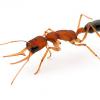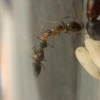Yep, I know, I just wish you could see it without copy pasting it into google maps (wouldn't be that hard to do right?). Also, I wish you could just see all the entries and hover over the dots to see the species. I don't know how practical that is but would help me plan better when going to places instead of searching up a ton of different species (30 tabs open for just antsmaps). It tells you everything in California, but CA is a big state and not always easily accessible. IDK just some thoughts, rambling, and ranting.
Edit: Also, Jasper Ridge is really close and has basically almost all the bay area species listed as found there, but there's no way I'm getting in since I'm not a researcher and its Stanford private property.
Edited by rcbuggy88, June 1 2020 - 8:07 PM.
My Shop 



Currently Keeping: Camponotus clarithorax, Camponotus hyatti, Tetramorium immigrans, Nylanderia vividula, Liometopum occidentale, Camponotus modoc, Zootermopsis sp.
Wanted: Acromyrmex versicolor, Myrmecocystus sp., Camponotus us-ca02 (vibrant red not dull orange), Prenolepis imparis, Anything else I don't have lol...
Kept Before: Solenopsis molesta, Prenolepis imparis (still got one, but infertile)




















